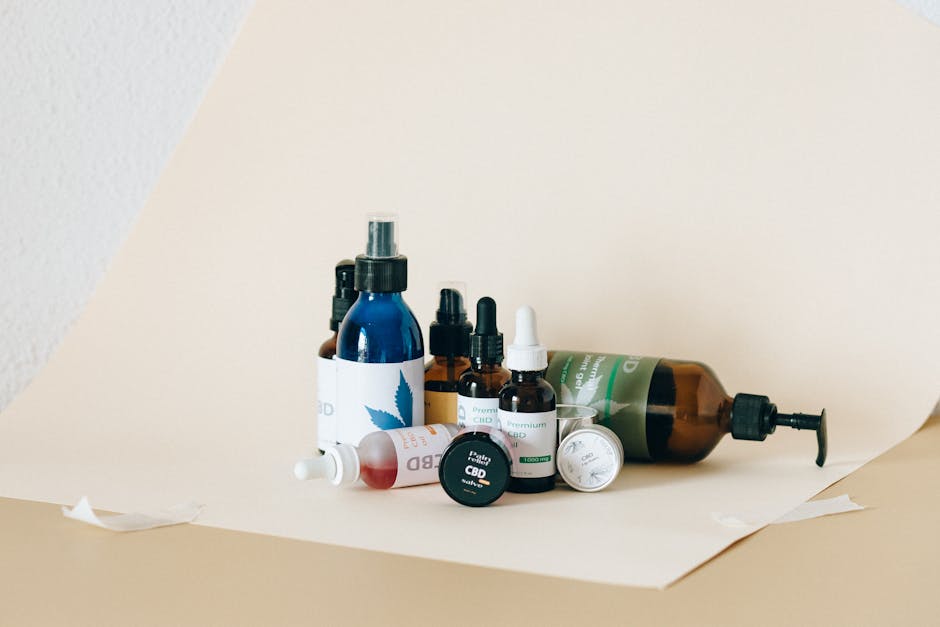The Color of Wellness: Transform Your Emotions with Art Therapy
Color shapes our world, influencing moods, altering perceptions, and even healing the mind. In the realm of health and wellness, an increasingly popular method for enhancing emotional well-being is art therapy, where hues and shades become tools for transformation. Imagine pouring your emotions onto a canvas, letting vibrant colors resonate with your inner landscape. This method isn’t just about weaving pretty pictures; it’s a profound exploration into your emotional core that can lead to genuine healing. With evidence backing its effectiveness, art therapy can serve as a bridge to understanding the self and bringing forth a spectrum of emotions.
Understanding Art Therapy: Foundations and Benefits

What is Art Therapy?

Art therapy is a unique therapeutic approach that combines the creative process with psychological principles. The essence of this practice lies in its ability to allow individuals to express themselves artistically—whether through painting, sculpting, or drawing—while simultaneously receiving guidance from a licensed art therapist. This amalgamation of arts and psychology can unlock aspects of a person's emotional world that words often fail to capture.
According to the American Art Therapy Association, art therapy is increasingly recognized as a viable treatment option for various conditions, including anxiety, depression, PTSD, and more. It encourages tapping into one’s creativity, allowing those who may struggle to articulate feelings verbally to communicate through art.
The Science Behind Art and Emotion

The brain is wired to respond to colors and shapes; different colors can invoke distinct emotional responses. For instance, studies have shown that warmer colors like red and yellow can evoke feelings of energy and warmth, while cooler colors like blue are often associated with calm and tranquility. Just the act of engaging with color can trigger cognitive, emotional, and physiological responses. This interplay between color, emotion, and mental state creates a fertile ground for healing through art therapy.
Research continues to show that incorporating visual art in therapy can lead to significant improvements in mental and emotional health. The Journal of the American Art Therapy Association highlights that art therapy can reduce anxiety and depression symptoms and improve self-esteem and coping mechanisms. Understanding these facets can empower you, allowing you to explore the therapeutic potential of your emotions through art.
Healing Colors: What Does Each Hue Mean?

Warm Colors: Invigoration and Passion

Colors like red, orange, and yellow depict enthusiasm and creativity. They stimulate the mind, heightening feelings of excitement. Painting with these colors may help individuals express energetic emotions or confront issues around passion, anger, or love.
For instance, if you’re struggling with feelings of stagnation, using a bright orange might stimulate creative thinking. This connection is why many art therapists advocate for a palette that reflects each individual's emotional state.
Cool Colors: Relaxation and Reflection

On the flip side, cooler colors such as blue, purple, and green are calming and often associated with feelings of peace and tranquility. If you find it difficult to calm racing thoughts or if anxiety frequently grips your senses, colors like soft blue or green might be your inner allies.
In art therapy, using these shades can create a soothing atmosphere. As you paint with these colors, consider how they make you feel—this process can offer insight into your anxieties and help in unpacking emotional weight.
Practical Steps to Start Your Art Therapy Journey

Gather Your Supplies

To kick off your art therapy journey, you don’t need a Picasso-level understanding of art. Gather basic supplies—think paper, acrylic paints, colored pencils, or watercolors. The goal is not perfection but expression.
Set Intentions

Before diving into your art session, take a moment to ground your thoughts. Consider what you wish to express. Attach emotional intentions to your creative process. For instance, if you aim to paint feelings of joy, choose a vibrant color palette that resonates with that emotion.
Embrace the Process, Not the Product

As you start painting, remember that the focus should be on the process rather than the end result. Tap into your emotions, let your brush dance across the canvas, and resist judgments about what you create. The end result is not a masterpiece; it’s a manifestation of your feelings.
Reflect on your Work
Once finished, take a moment to reflect on what you’ve created. What colors did you choose? How did those colors make you feel? Were there themes present? This reflection can deepen your understanding of your emotional landscape and enhance self-awareness.
Seek Guidance if Needed
While self-guided art exploration is beneficial, working with a trained art therapist can be incredibly transformative. They can provide structured sessions designed to help navigate complex emotions effectively.
Testimonials and Personal Experiences: Voices of Transformation
Art therapy fosters powerful transformations across various demographics. Take the story of Lisa, a 34-year-old battling chronic anxiety. Through art therapy, Lisa discovered that the strong, vivid colors of orange and red brought her energy, enabling her to express feelings of fear and joy. Realizing this connection bolstered her confidence in navigating emotional upheavals.
Then there’s Marco, who, after experiencing trauma, found solace in painting landscapes filled with soft, muted blues and greens. The calmness reflected in these hues translated into his sessions and brought him peace, helping him to process his emotions over time. Both Lisa and Marco’s experiences underscore the value of art therapy as a therapeutic outlet for emotions and healing.
Art Therapy in Different Contexts: A Versatile Approach
Personal Growth
Art therapy isn’t just for those feeling emotionally strained. It can also be a tool for personal growth. By exploring creativity, individuals can gain insights into their life journeys. If you’re questioning your life’s direction, engaging in art therapy may illuminate paths you hadn’t considered before.
Community Outreach
Organizations are recognizing the benefits of art therapy in group settings. Community centers often run programs to support emotional well-being through collaborative art projects. These initiatives foster connection, helping participants create bonds while navigating their emotional landscapes together.
Corporate Wellness
In today’s fast-paced corporate world, companies are beginning to adopt innovative strategies to improve mental health. Incorporating art therapy workshops into corporate wellness programs is rising. Employees are provided with creative time to express their emotions, fostering a healthier work environment.
Art Therapy and Mindfulness: A Beautiful Match
Introducing Mindfulness into Art Therapy
Mindfulness and art therapy complement each other beautifully. Integrating mindfulness techniques—like deep breathing and present-moment awareness—can enhance the artistic process, allowing individuals to engage more fully with their emotions.
The Power of Micro-Moments
Micro-moments of mindfulness can transform your art therapy experience. Before creating, take a minute to focus on your breath. Allow thoughts to flow without judgment. This connection between mindfulness and creativity deepens your engagement with color and form, illuminating your emotional experience.
For more insights about mindfulness, check out this resource on transforming mental health.
The Future of Art Therapy: Trends and Innovations
Digital Art Therapy
With the rise of technology, digital art therapy is also gaining traction. Virtual platforms and apps allow individuals to engage in art therapy sessions from the comfort of their homes. These innovations open avenues for those hesitant to attend in-person sessions, expanding access to benefits widely.
Cross-Disciplinary Approaches
In the future, we’re likely to see a crossover of art therapy with other therapeutic modalities. For example, integrating auditory elements—like music or soundscapes—might enhance creative expression. Programs combining visual arts with sound healing, like those explored in articles about sound frequencies for mental clarity, can enrich the emotional experience.
Final Thoughts: Embrace Your Colorful Journey
Exploring the transformative power of art therapy is the first step toward mastering your emotional landscape. As you embrace this colorful journey, allow yourself to indulge in hues and shades that resonate deeply with you. Each brushstroke is a step closer to understanding your emotions, leading to genuine healing.
Art therapy invites you to explore not just what colors mean but how they can empower you to articulate emotions previously left unspoken. This creative outlet—supported by a growing body of research—proves that the colors of wellness are at your fingertips.
So, grab those paints, stretch your canvas, and unveil the artist within. Color outside the lines, and let your emotional landscape take shape!



